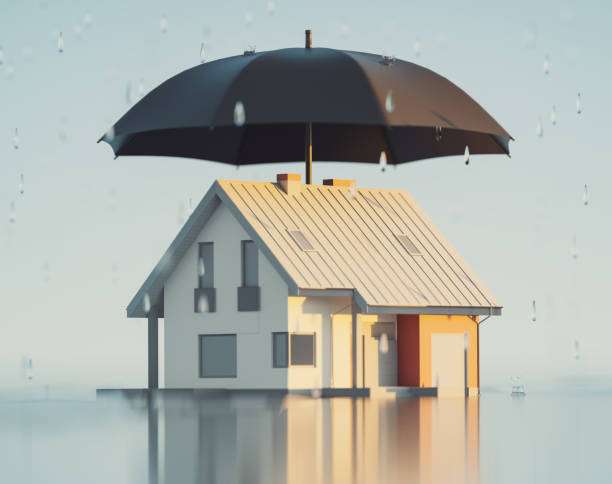
Home insurance is your safety net against unexpected events that could damage your property, belongings, or finances. While policies vary depending on the insurer and plan, most home insurance policies provide coverage in specific categories, including natural disasters, theft, and liability. Here’s a detailed breakdown of what’s covered, so you can better understand your protection and make informed decisions.
1. Dwelling Coverage
What It Covers:
Dwelling coverage protects the structure of your home, including walls, floors, roofs, and built-in systems like plumbing and electrical wiring.
Examples of Covered Perils:
- Fire and smoke damage
- Windstorms and hail
- Lightning strikes
- Falling objects, such as trees
- Vandalism and malicious mischief
What’s Not Covered:
- Flood or earthquake damage (requires separate policies)
- Normal wear and tear or maintenance issues
Tip: Ensure your coverage amount matches the cost of rebuilding your home, not its market value.
2. Other Structures Coverage
What It Covers:
This part of your policy protects structures on your property that aren’t attached to your main home, such as:
- Detached garages
- Fences
- Sheds
- Gazebos
Example: If a storm damages your shed, your policy will cover repair or replacement costs.
3. Personal Property Coverage
What It Covers:
Personal property coverage reimburses you for the loss or damage of your belongings due to covered events. This includes furniture, clothing, electronics, and appliances.
Coverage Types:
- Actual Cash Value: Pays for the current value of items, accounting for depreciation.
- Replacement Cost: Covers the full cost of replacing items with new ones.
Examples of Covered Situations:
- Theft of electronics from your home
- Damage to furniture caused by a fire
- Clothes destroyed by a burst pipe
Tip: High-value items like jewelry, artwork, and collectibles may require additional coverage through a rider or endorsement.
4. Loss of Use Coverage
What It Covers:
If your home becomes uninhabitable due to a covered peril, loss of use coverage (also known as additional living expenses) pays for temporary housing and related expenses.
Examples of Covered Costs:
- Hotel bills
- Restaurant meals
- Transportation expenses
Scenario: A fire forces you out of your home, and you need to stay in a hotel for two weeks. Your policy will cover those costs up to the policy limits.
5. Liability Coverage
What It Covers:
Liability coverage protects you if someone is injured on your property or if you accidentally cause damage to someone else’s property.
Examples:
- A guest slips and falls on your icy driveway, and you’re sued for medical bills.
- Your child accidentally breaks a neighbor’s window while playing baseball.
What’s Included:
- Legal fees
- Medical expenses for the injured party
- Settlement amounts
Tip: Consider increasing your liability limits if you have significant assets to protect.
6. Medical Payments to Others
What It Covers:
This coverage pays for minor medical expenses if someone is injured on your property, regardless of fault.
Examples:
- A delivery driver trips on your front steps and sprains their ankle.
- A guest burns themselves while cooking in your kitchen.
Coverage Limit: Typically ranges from $1,000 to $5,000.
7. Natural Disasters
What’s Covered:
Standard policies generally cover damages caused by natural disasters like:
- Windstorms
- Lightning strikes
- Hail
What’s Not Covered:
Floods and earthquakes are typically excluded and require separate policies.
Tip: If you live in high-risk areas, consider purchasing flood or earthquake insurance for comprehensive protection.
8. Theft and Vandalism
What It Covers:
Home insurance protects against loss or damage caused by theft or vandalism, whether it occurs at home or away.
Examples:
- Burglary while you’re on vacation
- Vandalized property, such as broken windows or graffiti
Pro Tip: Install security systems to deter theft and potentially qualify for a home insurance discount.
9. Additional Coverages and Endorsements
Many policies offer optional add-ons to enhance your coverage:
Flood Insurance
Covers damages caused by flooding from heavy rains, storm surges, or overflowing rivers.
Earthquake Insurance
Protects against damages from earthquakes and aftershocks.
Water Backup Coverage
Covers damage caused by sewer backups or sump pump failures.
Equipment Breakdown Coverage
Pays for repairs or replacements of appliances like HVAC systems or water heaters if they break down.
What Home Insurance Does Not Cover
While home insurance offers broad protection, certain situations are typically excluded:
- Wear and Tear: Policies won’t cover damage from neglect or lack of maintenance.
- Pest Infestations: Termite or rodent damage is usually excluded.
- Business Activities: Damages related to home-based businesses may require separate business insurance.
Tip: Read your policy thoroughly to understand its exclusions and consider endorsements for additional coverage if needed.
How to Maximize Your Home Insurance Coverage
- Perform Regular Maintenance: Preventive care reduces the risk of damage and potential claim denials.
- Document Your Belongings: Keep an inventory of your possessions, including photos and receipts, to streamline the claims process.
- Review Your Policy Annually: Update your coverage to reflect major life changes, renovations, or new high-value items.
- Work with an Agent: An experienced agent can help you customize your policy to meet your needs and avoid gaps in coverage.
Conclusion
Home insurance is a vital safety net that protects your home, belongings, and financial well-being. Understanding what your policy covers—and where it falls short—ensures you’re fully prepared for life’s unexpected challenges. From natural disasters to liability protection, a comprehensive home insurance policy gives you peace of mind and the support you need when it matters most.
Read More…
FAQs
- Does home insurance cover all types of natural disasters?
Standard policies cover windstorms and hail but exclude floods and earthquakes, which require separate policies. - What is the difference between replacement cost and actual cash value?
Replacement cost covers the full cost to replace items, while actual cash value accounts for depreciation. - Does home insurance cover personal belongings stolen outside the home?
Yes, most policies cover theft of belongings even if it occurs away from your home. - Can I add coverage for specific high-value items?
Yes, you can purchase riders or endorsements for items like jewelry, art, or collectibles. - What should I do if my home is in a high-risk flood area?
Consider purchasing a separate flood insurance policy through the NFIP or private insurers.
